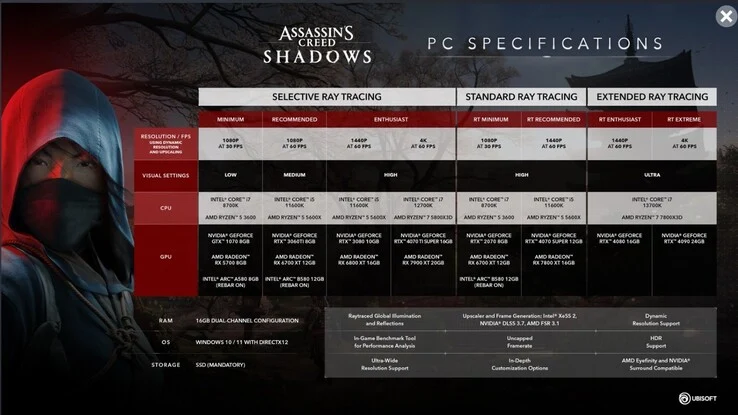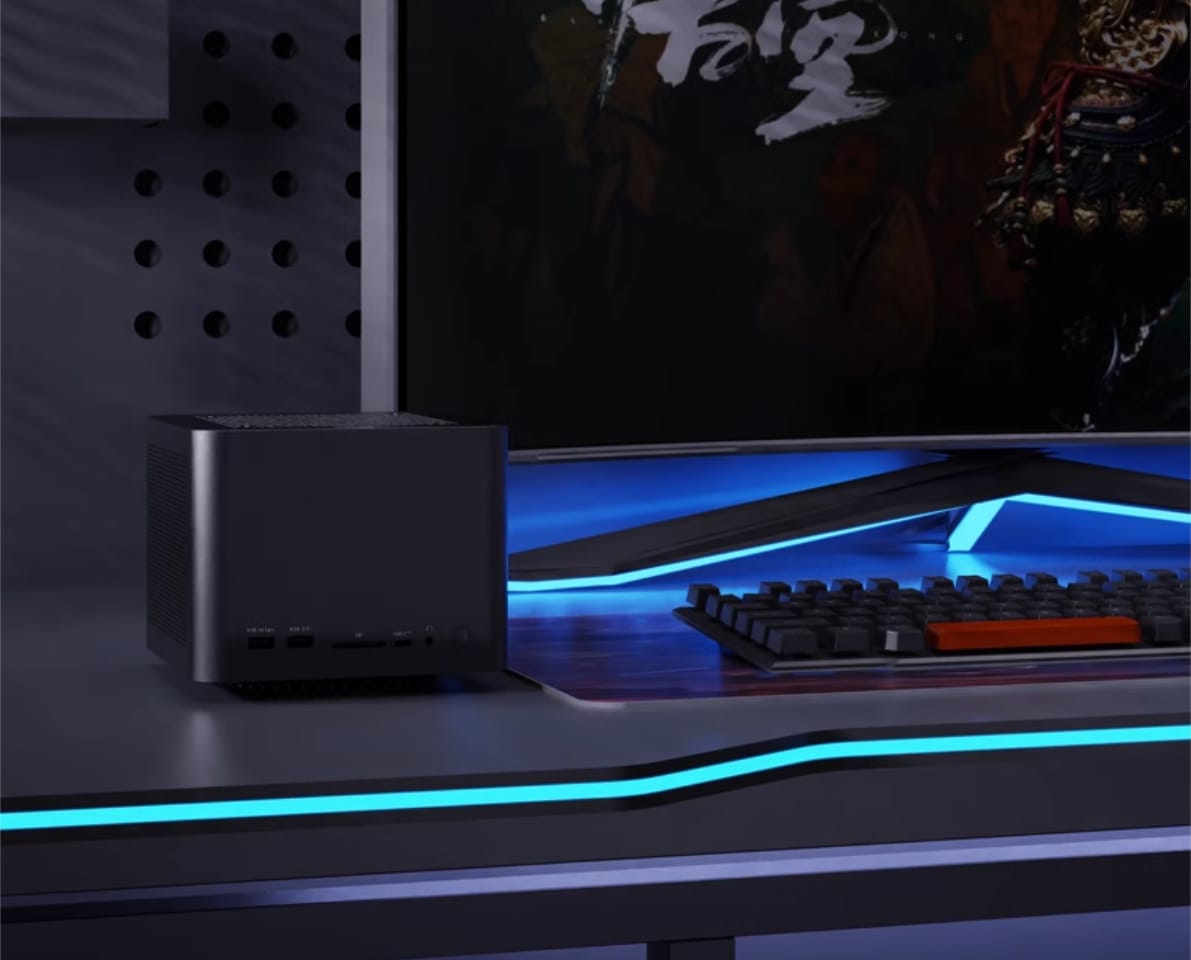We recently got an in-depth preview of Assassin’s Creed Shadows, just ahead of its launch on March 20. Ubisoft has also disclosed the system requirements for PC users. Notably, the game will feature capabilities tailored for PC, such as uncapped FPS, compatibility with AI upscalers like DLSS, FSR, and XeSS, along with raytraced lighting and reflections. Additionally, it will support ultra-wide screens, dynamic resolution adjustments, and come with a built-in benchmark tool. It’s worth mentioning that the new Nvidia GeForce RTX 50 series graphics cards are not included in this lineup, yet Assassin’s Creed Shadows should work smoothly with any of the four GPUs that were highlighted.
Hardware Needs for 4K Gaming
To enjoy the game at a stunning 4K with raytracing maxed out, you’ll need an Intel Core i7-13700K or AMD Ryzen 7 7800X3D, paired with at least an Nvidia GeForce RTX 4090. For those gaming at 1440p, a GeForce RTX 4080 will suffice. Oddly enough, AMD’s Radeon RX 7900 XTX is absent from the requirements, which raises some eyebrows.
Confusion with Raytracing Options
When it comes to “standard” raytracing, the requirements become a bit more perplexing. For 1080p, you’ll need a decent Core i7-8700K or Ryzen 5 3600X, along with a GeForce RTX 2070 or Radeon RX 6800 XT. However, if you wish to play at 1440p, the specs escalate, requiring a Core i5-11600K or Ryzen 5 5600X along with a GeForce 4070 Super, Radeon RX 7800 XT, or Intel Arc B580. A noticeable trend is that AMD and Intel GPUs seem to need more VRAM compared to Nvidia for running Assassin’s Creed Shadows, which is quite curious.
Minimum Requirements and 60 FPS Gameplay
What Ubisoft means by ‘selective’ ray tracing is still unclear. For the absolute minimum, you’ll need an AMD Ryzen 5 3600 or Intel Core i7-8700K, plus a three-generation-old GeForce GTX 1070 or Radeon RX 5700, or the newer Intel Arc A580. To hit that 60 FPS target, slightly upgraded hardware will be required, like the Core i5-11600K or AMD Ryzen 5 5600X, paired with a GeForce RTX 3060 Ti, Radeon RX 6700 XT, or Intel Arc B580.
For 1440p gaming, the requirements ramp up to an Intel Core i5-11600K or AMD Ryzen 5 5600X, along with a GeForce RTX 3080 or Radeon RX 6800 XT. Finally, for 4K gaming, you’ll need to bump your specs to a Core i7-12700K or Ryzen 7 5800X3D, coupled with either a GeForce RTX 4070 Ti Super or Radeon RX 7900 XT. All setups will need a minimum of 16 GB of RAM and Windows 10 or 11. Interestingly, AMD has not disclosed the required hard drive capacity for the game, but it’s reasonable to expect it to exceed 100 GB.
In summary, it seems that Assassin’s Creed Shadows should operate on a broad spectrum of hardware, especially at lower resolutions. This is promising for handheld devices like the Steam Deck, Asus ROG Ally, and Lenovo Legion Go. However, the biggest challenge for the Steam Deck will be Ubisoft’s mandatory app integration, which could complicate things.
Source:
Link





